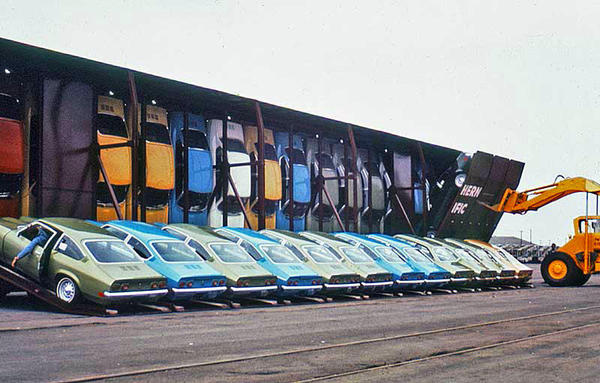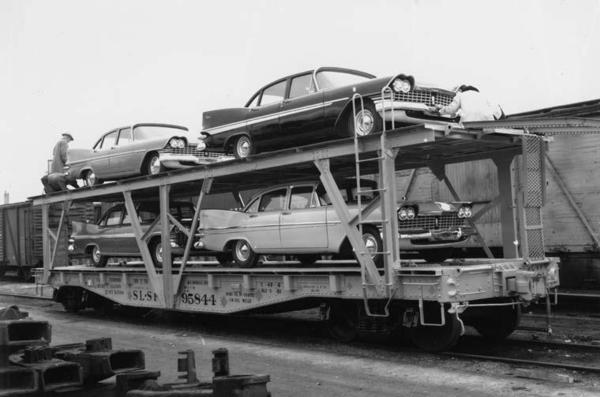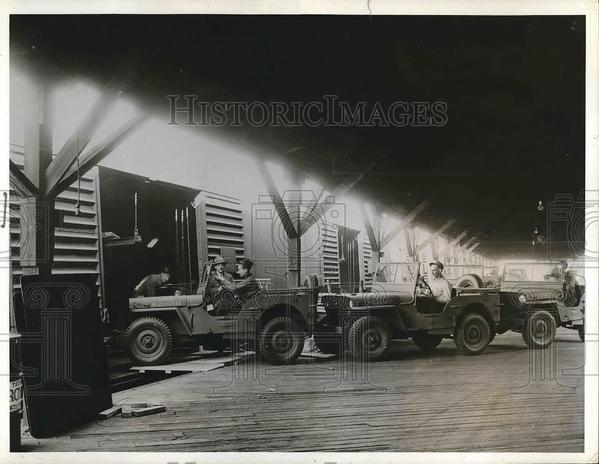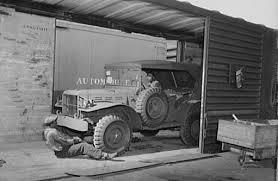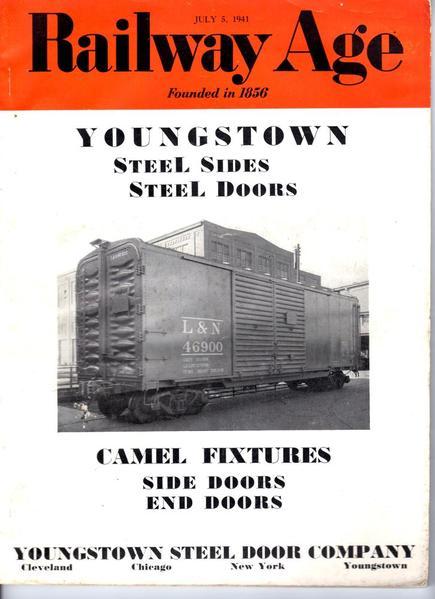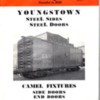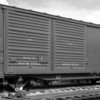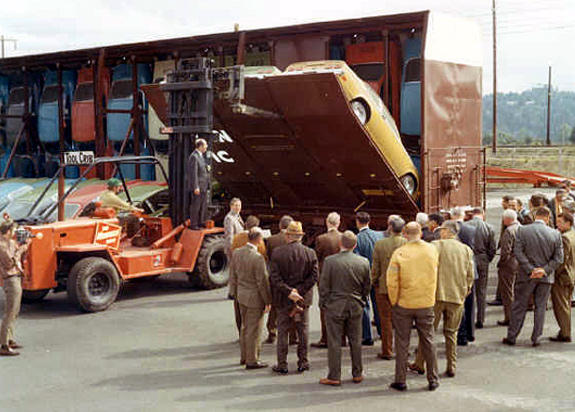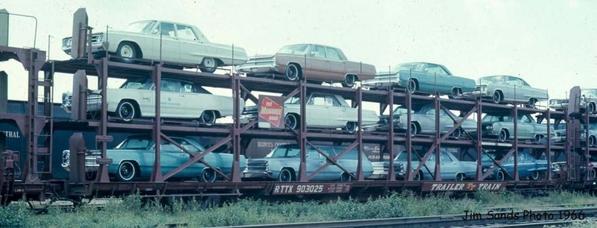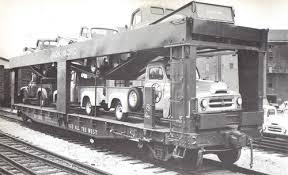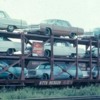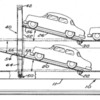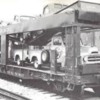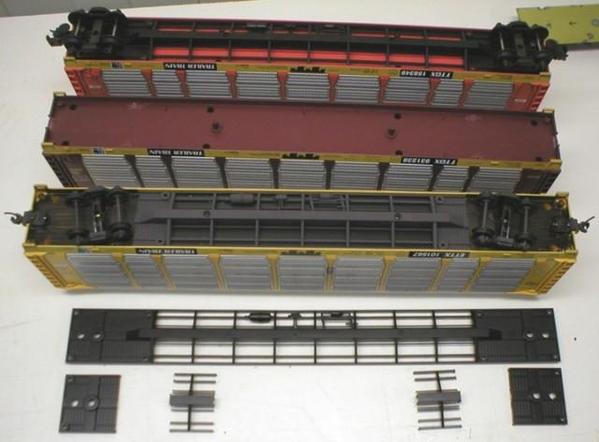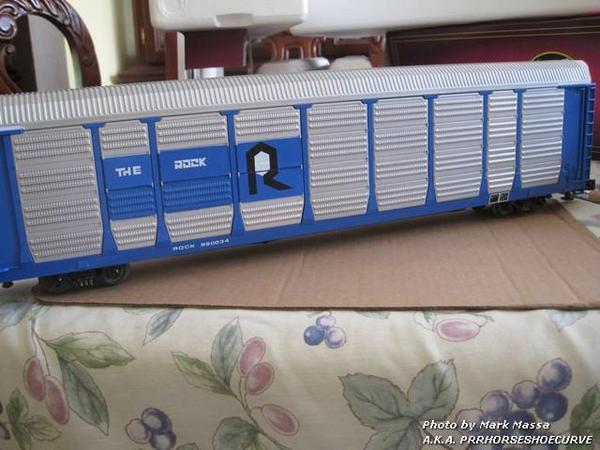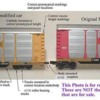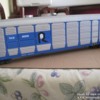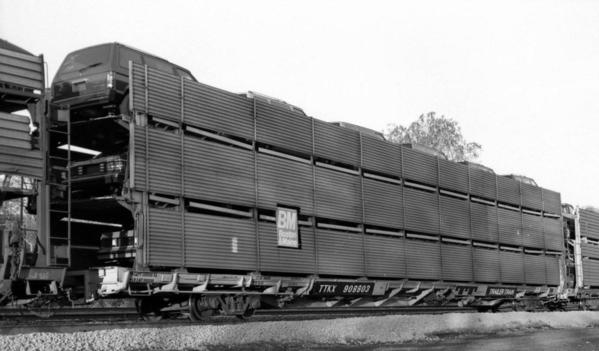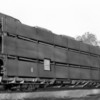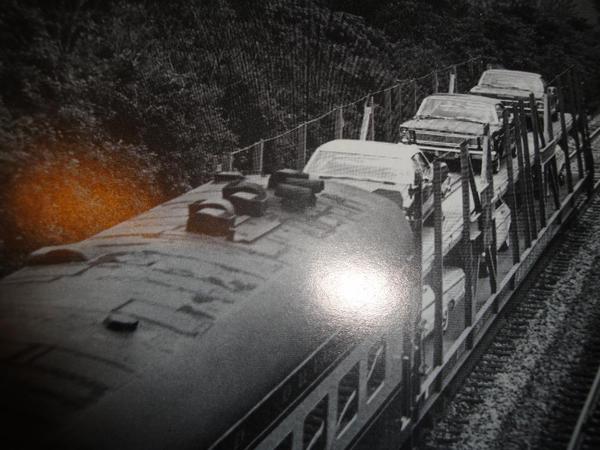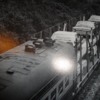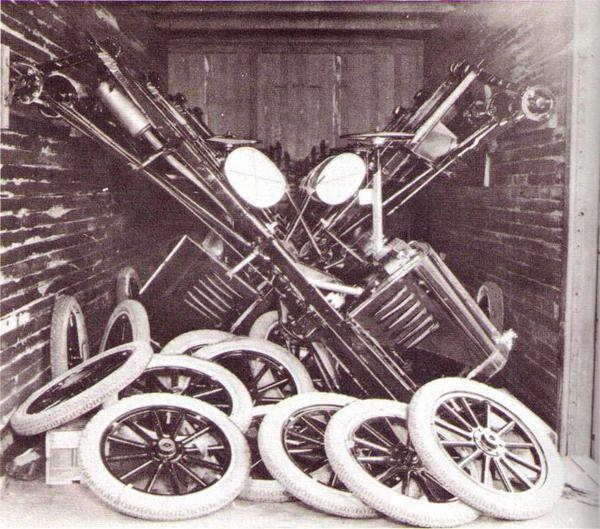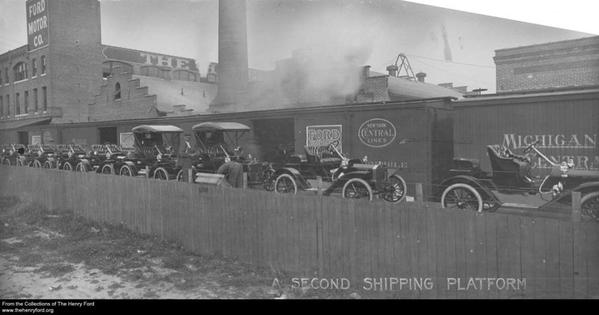Throughout the history of the mass production of the automobile North America's auto makers have been searching the most efficient method for the shipment of their products from factories to dealers. For the first half of the 20th century shipping by rail in boxcars was the preferred method. Railroads lost their hold on the majority of new automobile shipments in the 1950s. New diesel trucks and specialized auto trailers provided better service by offering direct delivery to dealers using less labor and less time than boxcar shipment. Railroads and freight car builders responded to the loss of valuable auto business by developing new freight cars that could be loaded more efficiently, carry more autos and be unloaded at regional distribution centers for final delivery to dealers by truck. After a few evolutionary steps in the 1950s railroads regained leadership in the new automobile shipping market in the 1960s and have held that position ever since.
Lets take a look at the O scale models that are currently available on the new and secondary markets that allow us depict railroad automobile shipment from the 1950s to today.
The 6 car Evans Auto Loader was built by Evans for the New York Central. The superstructure was mounted on a standard 53 foot NYC flat car. This unique prototype carried two more autos than could typically be loaded in a boxcar and one or two more than could be handled by the highway carriers of the day. While the 6 car Evans Auto Loader represented progress toward the future and inspired a popular post war toy train car it never reached the full production stage. K-Line produced a full sized replica of the Evans Auto Loader as their K694.
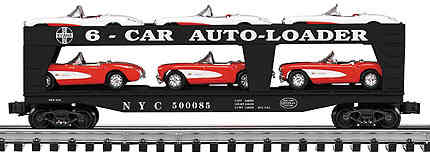
The next major step in the evolution of the auto carrier car came in 1957 when Canadian National began to field a fleet of 75 foot long auto carriers. The CN cars were fully enclosed with solid sides, a full roof and doors at both ends. Double decks allowed these pioneering cars to accommodate 8 automobiles. The CN cars entered a second career in 1971 when several dozen were purchased by the Auto Train Corporation for their innovative service that enabled passengers to take their automobiles with them to Florida. The Auto Train Corporation operated their popular service for 10 years. Auto Train service was resumed by Amtrak in 1983 and it continues today with new equipment.
MTH introduced their model of the 75 foot Auto Train Auto Carrier in their 2002 Volume 2 catalog. The model is available in several paint schemes including CN, Auto Train and Amtrak. It has opening end doors and operates on O-54 curves. Recent versions include Kadee mounting pads.
Here is the MTH car in the original CN paint scheme,
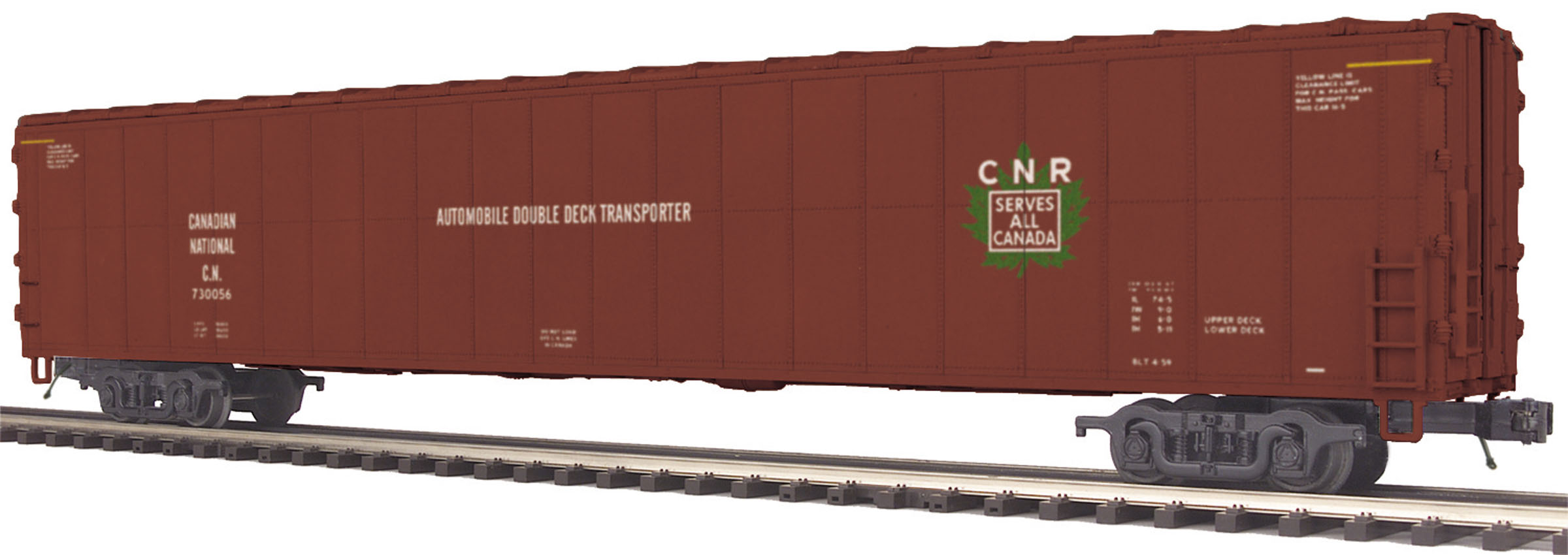
the oh so 70s Auto Train red, white and purple,

and one of the Amtrak schemes.

The auto carrier concept took off in the 1960s when open two and three level racks were applied to new 85 and 89 foot flat cars. The racks and the long cars allowed 10 to 15 pickups, vans or passenger autos to be hauled in a single car load. However, the open racks left the vehicles vulnerable to damage in transit. Fully enclosed auto racks offering better protection of lading became standard in the 1970s and remain so to this day.
MTH introduced a model of a modern auto rack as their Corrugated Auto Carrier in the 1999 Volume 3 catalog. It is full scale in height and width but the length is short of full scale. At 20 inches long they are still monsters but will operate on O-54 curves. Since the 2008 Volume 1 catalog these cars have featured more prototypical inboard truck mounting.

The MTH corrugated side auto racks have also been offered in 6 car sets.
![]()
The Lionel 89 foot auto rack is highly detailed and full scale in all three dimensions. A swinging coupler mount allows operation on curves as tight as O-54 while maintaining close car spacing on broader curves and tangent track.
Since their 2013 debut the Lionel Standard O 89 foot auto racks have been offered as singe cars,

in two car packs,

and in sets.

The Atlas articulated auto carrier reached the O scale market in 2001 and is based on a car manufactured by Thrall starting in 1997. It is a double deck design intended for shipping SUVs and light trucks. The model is 35 inches long and features opening end doors, a die-cast chassis and prototypical 70 ton roller bearing trucks.


As always your questions, comments or corrections are most welcome. And please post photos of O scale auto carriers on your layouts!
For information on other types of freight cars see the O Scale Freight Car Guide.
https://ogrforum.ogaugerr.com/t...le-freight-car-guide




